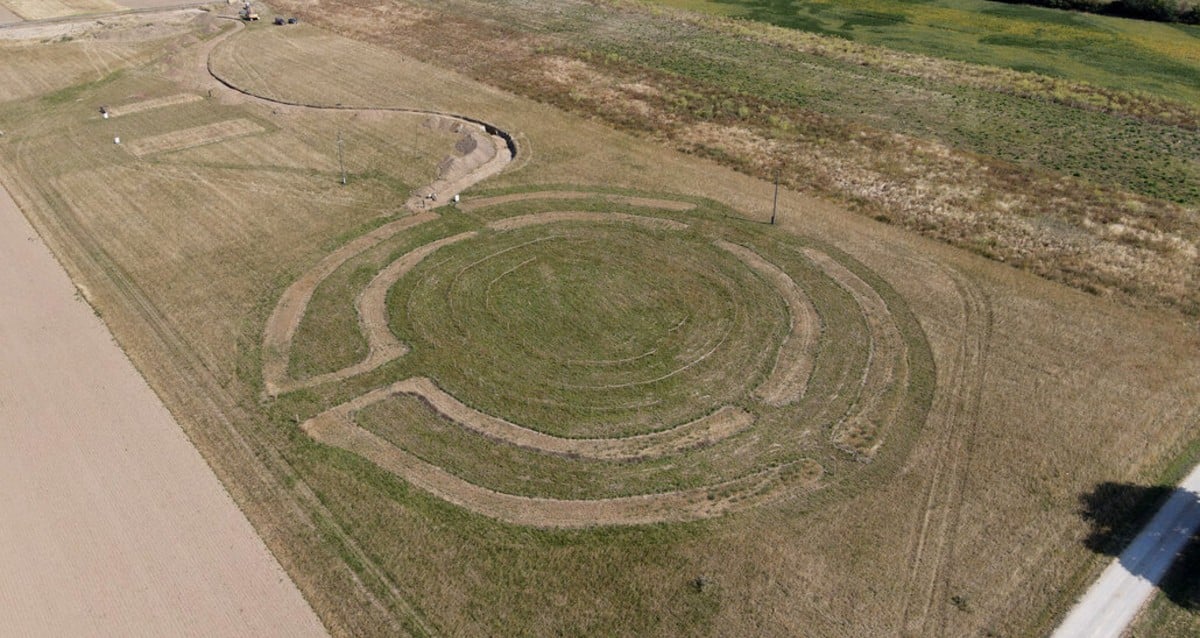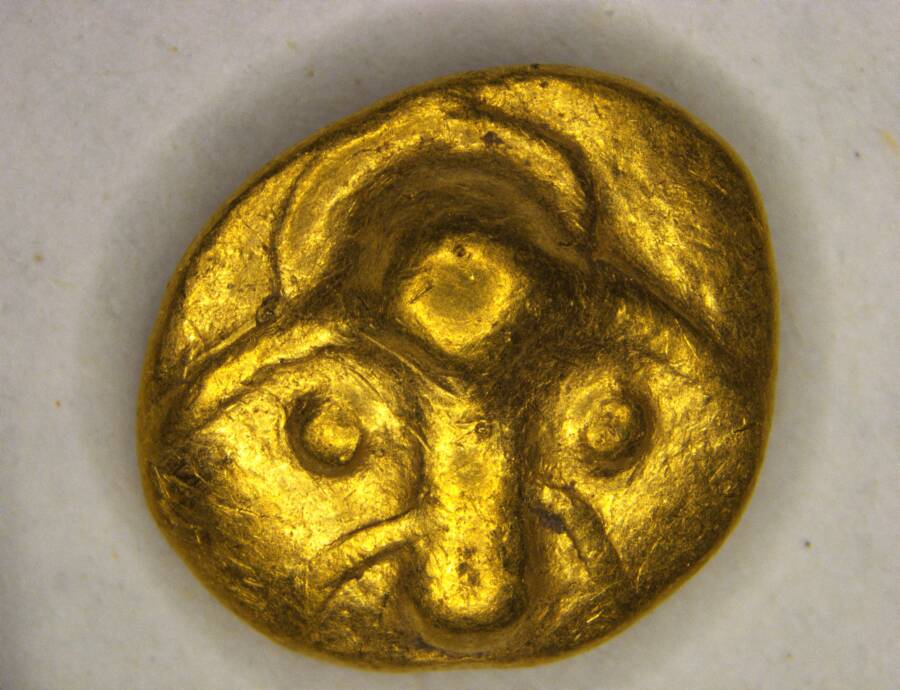Hidden Secrets Unearthed: Ancient Austrian Earthwork Circles Challenge Stonehenge’s Legacy by 2,000 Years
Imagine stumbling upon a massive, Earth-sized playground from over 6,500 years ago—rings nearly 350 feet across, dotted with wooden stakes and gateways inviting ancient visitors inside. Sounds like something out of a Stone Age sci-fi flick, right? Well, in a quiet field near Rechnitz, Austria, archaeologists have just peeled back the veil on these colossal Neolithic earthwork circles, and guess what—they predate the Pyramids by a solid two millennia. What in the world were our ancestors up to, carving out these monumental ditches that easily outsize Stonehenge? These circles aren’t just giant ground doodles; they’re portals into the social, spiritual, and maybe even agricultural revolutions of the Middle Neolithic period. And just when you thought ancient mysteries couldn’t get any juicier, nearby settlements popped up, hinting at the dawn of permanent human habitats. Ready to take a peek inside this prehistoric puzzle?
Measuring as much as 350 feet across, these earthwork rings were dotted with wooden stakes and featured several entrances where people could step inside.
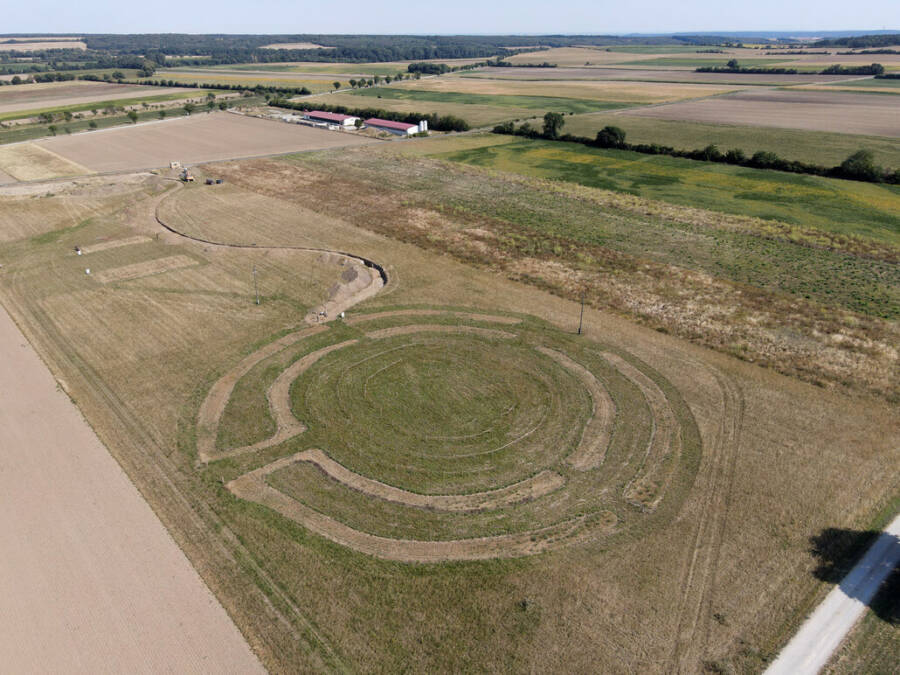
Office of the Burgenland State Government/Nikolaus FranzDating back to roughly 4500 B.C.E., these massive rings predate the Pyramids by two millennia.
For centuries, a nondescript field near Rechnitz, Austria, held an ancient secret that sat just out of sight. Virtually invisible to the naked eye beneath waves of grass was a series of earthwork circles that Neolithic people carved into the ground roughly 6,500 years ago. Now, they’ve finally been uncovered.
These sprawling earthwork circles, older than both Stonehenge and the Great Pyramids of Giza, provide fascinating insights into Neolithic culture in the region, with archaeologists calling them “a true window into the Stone Age.”
Uncovering The Neolithic Earthwork Circles In An Austrian Field
According to an announcement from the Office of the Burgenland Provincial Government, the four earthwork circles near Rechnitz, Austria were previously all but invisible to any passersby. However, aerial archaeological and geomagnetic surveys conducted between 2011 and 2017 were able to detect them. Now, archaeologists have undertaken an excavation of the site ahead of the construction of a new archaeological park.
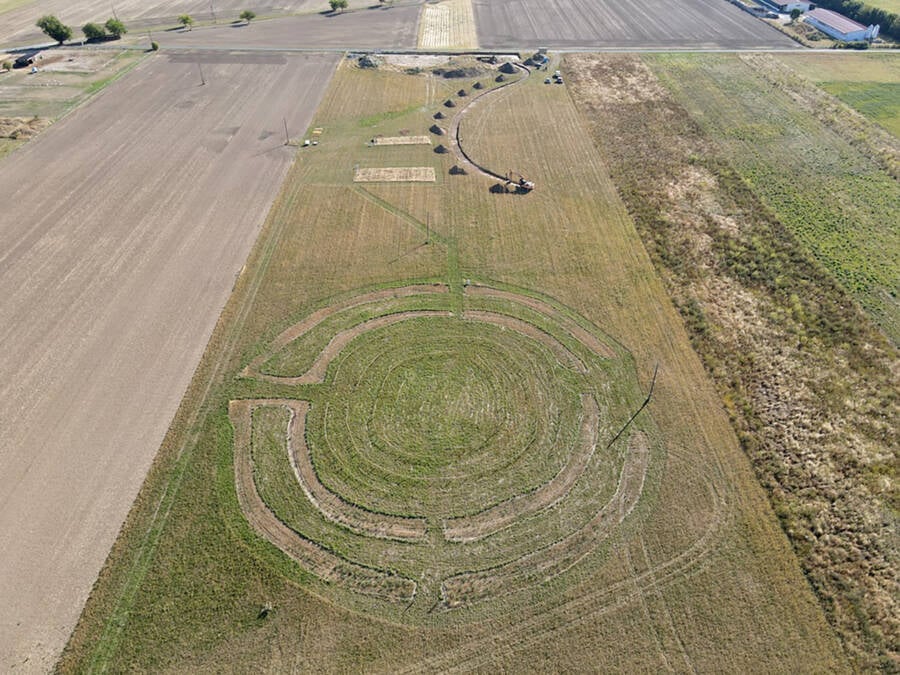
Office of the Burgenland State Government/Nikolaus FranzOnce “virtually invisible” to the naked eye, the earthwork circles in Austria have now been revealed.
During the most recent excavations, archaeologists uncovered “four monumental earthworks” in the field outside Rechnitz. Three of the earthwork circles have been identified as Kreisgrabenanlagen, or circular ditches, which archaeologists believe were constructed between 4850 and 4500 B.C.E. during the Middle Neolithic Period.
Furthermore, these earthwork circles are enormous, with a diameter of roughly 350 feet. To archaeologists, the size of the circles suggests that the site had particular importance to ancient people during the Middle Neolithic Period.
“Due to the existence of three of these monumental structures dating back to the 5th millennium B.C. in close proximity to one another, the Rechnitz site can be considered a supra-regional center of the Middle Neolithic period,” said Nikolaus Franz, the director of Archäologie Burgenland.
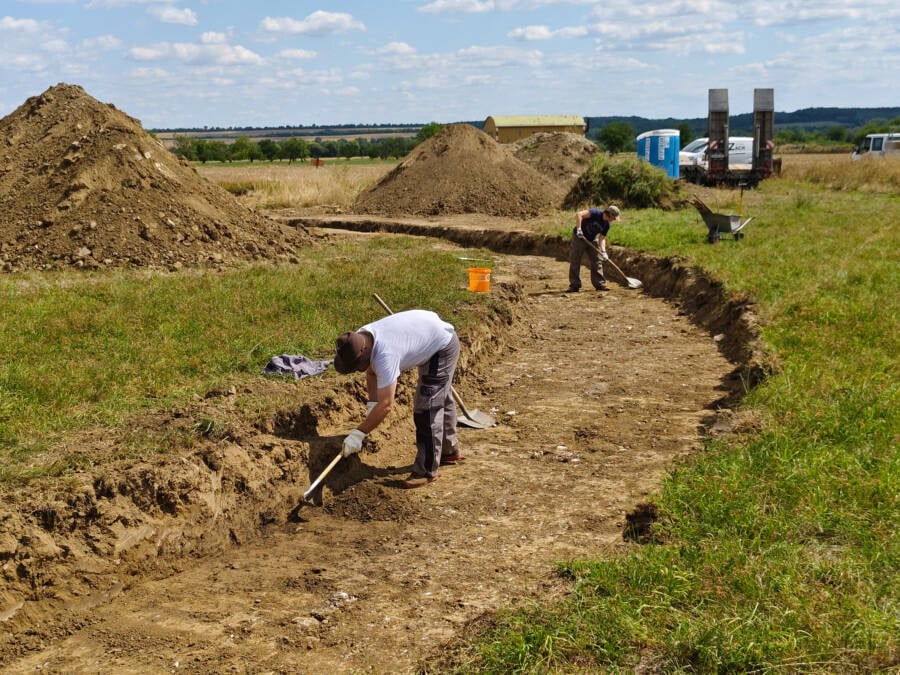
Office of the Burgenland State Government/Nikolaus FranzArchaeologists uncovering the circles, which were initially detected through aerial archaeological and geomagnetic surveys.
In other words, the circles were likely some kind of important hub with cultural, social, or religious significance. What’s more, they also hint at the transition from hunting and gathering to building more permanent homesteads, as two Neolithic settlements were discovered nearby.
In addition, the circles are estimated to be roughly 6,500 years old, which makes them a full 2,000 years older than Stonehenge and the Pyramids of Giza.
The Significance Of The Stone Age Settlements Discovered In Rechnitz
Adding to the thrill of finding these earthwork circles was the discovery of two Neolithic settlements nearby. Situated next to one of the circles, the settlements mostly consist of houses from the Early Neolithic Period, or the “Neolithic Revolution,” when hunter-gatherers began to establish more permanent agricultural settlements. A handful of individual houses also date to the Middle Neolithic Period, when the earthwork circles were first formed.
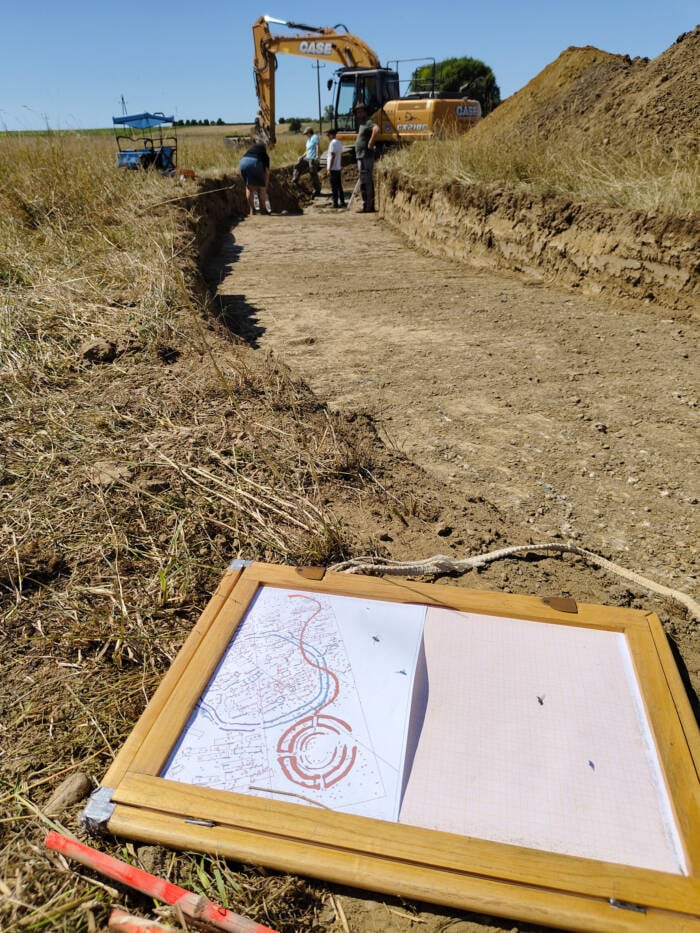
Office of the Burgenland State Government/Nikolaus FranzA map of the excavation site. Both the earthwork circles and the other Neolithic evidence found at the site hint at how ancient humans transitioned from hunting and gathering to establishing more permanent settlements.
“The excavations open a veritable window into the Stone Age,” Franz remarked. “We are learning a great deal about the Neolithic settler clans who found this a favorable location to establish the cultural techniques of agriculture and livestock farming in what is now Burgenland in the 6th millennium B.C. After centuries of hunting and gathering, the gradual settlement of humans was truly revolutionary.”
